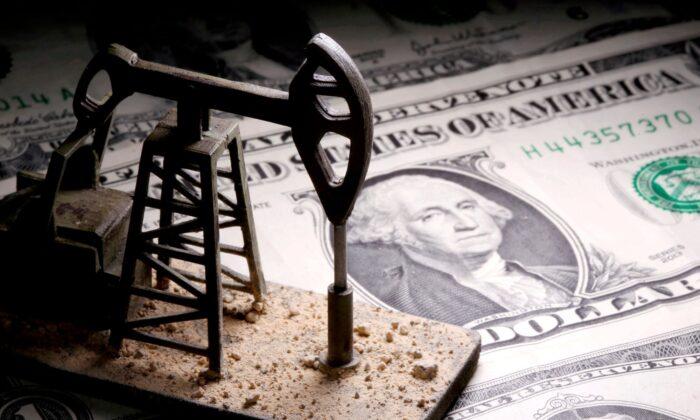LONDON—Oil prices rose on Friday after the West’s energy watchdog said it expected global demand to rise to a record high this year on the back of a recovery in Chinese consumption.
The International Energy Agency (IEA) also warned that output cuts announced by OPEC+ producers could exacerbate an oil supply deficit and hurt consumers.
Brent crude futures were up 22 cents, or 0.26 percent, to $86.31 per barrel at 1046 GMT. West Texas Intermediate crude futures (WTI) rose 21 cents, or 0.26 percent, to $82.37.
Both contracts were set to post a fourth consecutive week of gains amid easing concerns over a banking crisis last month and the surprise decision last week by the Organization of the Petroleum Exporting Countries (OPEC) and other producers led by Russia, a group known as OPEC+, to further cut output.
Brent is set to post a 1.4 percent weekly gain, while WTI was up 2 percent.
In its monthly report on Friday, the IEA said world oil demand is set to grow by 2 million barrels per day (bpd) in 2023 to a record 101.9 million bpd, driven in most part by stronger Chinese consumption after the lifting of COVID-19 restrictions.
Jet fuel demand accounts for 57 percent of the 2023 gains, it said.
But OPEC on Thursday flagged downside risks to summer oil demand as part of the backdrop for its decision to cut output by a further 1.16 million bpd.
The IEA said the OPEC+ decision could hurt consumers and global economic recovery.
“Consumers confronted by inflated prices for basic necessities will now have to spread their budgets even more thinly,” the IEA said in its monthly oil report.
“This augurs badly for the economic recovery and growth,” it added.
The IEA said it expected global oil supply to fall by 400,000 bpd by the end of the year, citing an expected production increase of 1 million bpd from outside of OPEC+ beginning in March versus a 1.4 million bpd decline from the producer bloc.
The U.S. dollar index was trading at roughly a one-year low, after U.S. consumer and producer price data releases this week raised expectations that the Fed was approaching the end of its rate hiking cycle.
The weakening greenback makes dollar-denominated oil cheaper for investors holding other currencies, boosting demand.





